
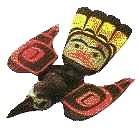
| Story Programs | Festivals and Special Events | Awards and Sponsors | Recordings |
| Articles and Publications | Workshops | Professional Organizations | Accolades |
| Contact Information | Prices |


The Study Guide
by
Marilyn A. Kinsella
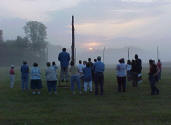
Autumnal Equinox Winter Solstice Vernal Equinox Summer Solstice
"Turn your face to
the sun and the shadows fall behind you."
--Maori
proverb
History - 1100-1200 AD, the city covered almost six square miles and the population reached as high as 20,000 people living in a thriving agricultural civilization.
The site was abandoned by 1400 AD. It is not known exactly why but experts suspect a combination of factors including depletion of local resources, climatic changes that may have affected crops, political and economic disruptions, Cahokia's loss of power and possibly disease.
The area had long been recognized as the site of Indian mounds but it was not until the late 1800's that people took interest in them after an amateur archeologist did some digging in the area and found a number of artifacts. The artifacts were exhibited at the World's Fair in Chicago and St. Louis and drew enough attention from the public to spawn a movement to turn the area in which they were found into a state park. In the early 1900's, archeologists dug in the area and proved that the mounds were manmade. In 1923, a bill appropriated the funds to acquire the first 144 acres, and in 1925 the land was purchased and the park created. Several additional parcels were acquired from the 1960s to the 1980s, bringing the size to 2200 acres. Today the site has 69 of the original 120 mounds. Most of the rest were altered or destroyed by modern farming and urban construction.
In the early 1960's while preparations were being made for construction of a new interstate highway, archaeologists found the remains of what has been called Woodhenge, tall wooden poles sunk vertically into the ground in a massive circle. Some experts believe Woodhenge was a calendar that helped ancient people tell the time of the year. Others think it was used as an engineering device to lay out the village. There was evidence of at least five such wooden circles in the area. In 1985 Woodhenge was rebuilt so that visitors could see what it would have looked like in ancient times.
From:
Earthworks of Eastern North America
Cahokia Mounds Photo Gallery
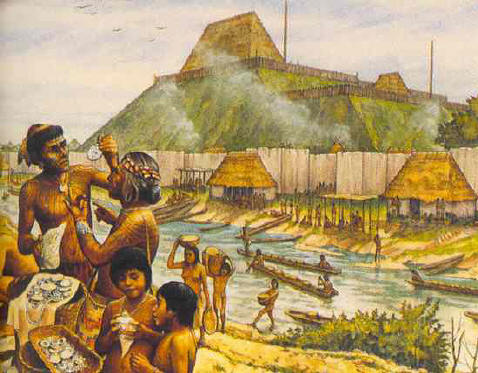
Cahokia Mounds State Historic Site, painting by William R. Iseminger.
Woodhenge is the circle to the left of the picture. Notice the shadow to the left of the center post and the shadows on west side of large central mound and other structures. This indicates that the artist conceptualized this picture at what time of day?
Woodhenge's center post is in the foreground.The post with the white patch just left of the central post is due east. When these two posts align with the rising sun, it is either the spring (vernal) or autumnal equinox. Monk's Mound is in the background. The mound seems to be giving birth to the sun as it rises during the equinox. There are only two days in a year, when night and day are exactly the same length - the spring (March 21) and autumn (September 22) equinox.
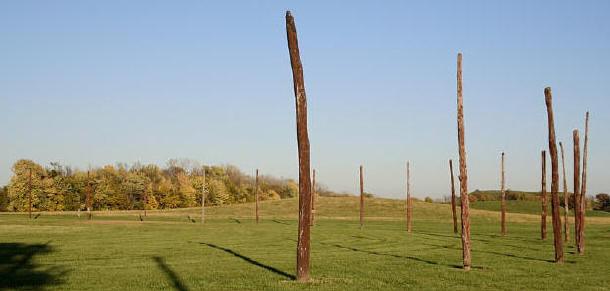
Woodhenge - from the outer circle facing east northeast.
Notice the marker for the winter solstice just right of the post in the foreground. When the rising sun aligns with this post and the central post (not in picture), it is a sign that the sun will start its slow journey back. The winter solstice usually occurs around the 21st of December. The post for the summer solstice is not in the picture. It is four posts to the left of the equinox post. When the sun align with these two posts - usually around June 21 - the sun begins it's journey back to the center and we enjoy summer.
Mississippian Indians often used designs to decorate their pottery and gorgets. Some of them were calendars with decorations symbolizing the sun, the earth, and the four directions. Sometimes the design was simple with the lines and circles. Others used animals such a spider or woodpecker for a central picture. Most had circles surrounding the object and lines radiating outward
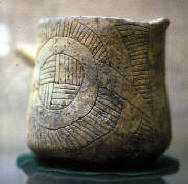
Beaker form with incised decoration associated with solar observation.
Similar to the pottery beaker fragment found in pit near the winter solstice sighting pole.
A beaker fragment was found by Dr. Warren Wittry in a pit near the winter solstice pole at the Woodhenge site. He believes this fragment incorporates a world symbol (the circle and cross representing the earth and the four directions), and a sun symbol (the radiating lines). The open path on the lower right represents the winter solstice sunrise position, and the sun orbits the sky path to exit at sunset along the closed path on the lower left.
Classroom ideas and Reference
- Legend of the Red Cedar - version of a sacred Cherokee story as told by Marilyn Kinsella
- Grandmother Spider Brings the Light - Study Guide - classroom ideas.
- Nasa Kids' Club - fun, on-line games
- Nasa - Students - separated into K-4; 5-8; 9-12; higher education. Be sure to "renew" the page.
- Spider Gorget Lesson from IL State Museum Make a Mississippian-style Gorget
- Cahokia Mounds Woodhenge: Fascinating information about the Mississippian people who once built the great prehistoric city of Cahokia was revealed accidentally during excavations in the early 1960s.
- Windows to the Universe: Great website that explains many of the astrological facts of the Earth with several pages on the Summer Solstice, Winter Solstice, and the Spring and Autumn Equinox. Each page is written for beginner, intermediate and advanced.
- http://nides.bc.ca/Assignments/Space/Folklore.htm
- Aboriginal Star Knowledge - Native American Astronomy
- Woodhenge - more pictures from Larry Kinsella
- Winter Solstice Template used in an art project
- http://ecuip.lib.uchicago.edu/diglib/science/cultural_astronomy/interactives/woodhenge/woodhenge.html